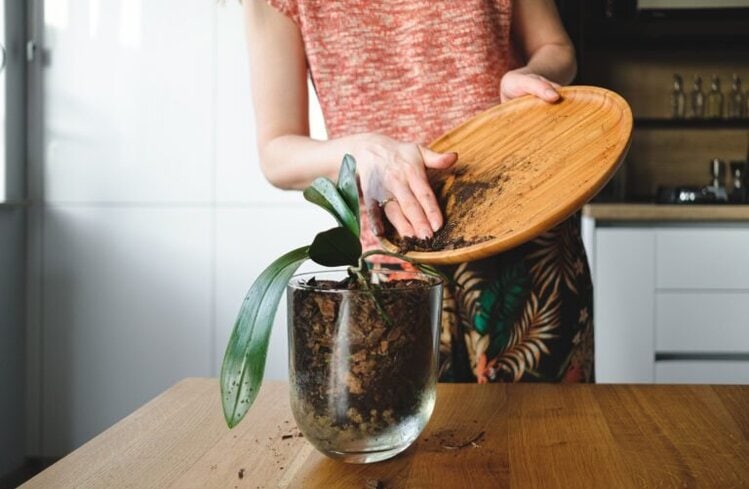Introduction
Compost in Small Apartments Without Smell is usually reserved for individuals who have large gardens. But the truth is that you do not require a farm or a backyard to compost food waste. You can compost kitchen scraps into nutrient-rich compost even in a small apartment—without your home smelling like a trash can.
In this tutorial, I’ll debunk the myths of indoor Compost in Small Apartments Without Smell, teach you simple ways that really work in tight spaces, and give you hints to ensure your compost flows like silk and smells like fresh grass. When you’re done, you’ll have a clear idea of how to compost in your apartment without dealing with stinky odors or mess.
Why Apartment Composting Makes Sense
Compost in Small Apartments Without Smell is too messy for apartment living, most people think. But think about it:
The typical household sends 20–30% of its waste into the trash as food scraps.
All that trash goes to landfills, where it produces methane—a more potent greenhouse gas than carbon dioxide.
Home Compost in Small Apartments Without Smell isn’t just cutting down on your trash volume—it also provides you with natural fertilizer for house plants, balcony plants, or even to donate to community gardens.
In short, apartment composting isn’t merely feasible—it’s a savvy move towards sustainable living.
The Worst Fear: The Smell
Let’s get the elephant out of the room. Most are afraid: “Will my apartment smell if I compost?”
The good news is, well-maintained Compost in Small Apartments Without Smell. Indeed, it typically smells like damp soil after rain.
Smell only occurs when:
Excessive wet waste (greens) such as fruit peels are added with no balance.
There is inadequate air circulation.
The Compost in Small Apartments Without Smell Apartments Without Smell is not layered adequately.
Once you know how to balance your compost, you’ll see it’s cleaner than you imagined.
Various Composting Techniques for Small Apartments
Following are some tried-and-proven techniques that function effectively in restricted areas:
- Bokashi Composting (Ideal for beginners)
Utilizes special bran inoculated with friendly microbes.
Add scraps into a closed bucket, add Bokashi bran, and tread down.
Ferments rather than rotting—no nasty odor.
After 2 weeks, the fermented waste can be buried in the ground or donated to community gardens.
???? Apartment-friendly: It’s small, odor-free, and pest-free.
- Vermicomposting (Worm Bins)

Utilizes red wigglers (composting worms) to decompose organic leftovers.
The worms consume your kitchen garbage and yield nutrient-dense “worm castings.”
Has an earthy smell, not a stinky one, if done right.
Hack: Don’t feed worms meat, greasy food, or citrus peels, which they don’t like.
Very little odor, but can be pricey.
Suitable for busy lifestyles: If you desire convenience, this is easy.
- DIY Compost Bins
A basic bucket or container with a lid and small holes for ventilation.
Layer “greens” (fruit/veg scraps) with “browns” (dry leaves, shredded paper, cardboard).
Keep it balanced and mix weekly.
???? Cost-effective: Uses what you already have in the house.
Good for Composting
What You Can Compost (and What Not To)
Fruit & veggie scraps
Coffee grounds and filters
Tea bags (not plastic ones)
Eggshells (crushed)
Shredded cardboard/paper
Dry leaves
Avoid These Indoors
Meat, bones, fish
Dairy foods
Oily or greasy foods
Lots of citrus peels
Pet waste
These “bad” things smell, attract pests, or cause decomposition to slow down.
Greens & Browns
Composting is like preparing a sandwich
Greens = Damp waste (veggies, fruit peels)
Browns = Dry waste (paper, cardboard, coco coir, sawdust)
For each handful of greens, use an equal or bigger amount of browns. This maintains odor prevention.
- Chop Scraps Fine
The more finely chopped the scraps, the quicker they compost. Chop banana peels or apple cores to hasten the process.
- Moist but Not Wet
Compost must be like a wrung sponge. Too wet = stench, too dry = nothing decomposes.
- Stir Every So Often
Aerating (tumbling) your compost adds oxygen and keeps it fresh. Once a week is sufficient.
- Use a Carbon Filter Lid or Newspaper Layer
If you’re really worried about smell, use a bin with a carbon filter or place a layer of newspaper/cardboard on top.
Dealing With Common Problems
???? Issue: “It’s not breaking down.”
Solution
Cut scraps finer, add water if too dry, or add worms if feasible.
Where to Use the Compost
When your compost is mature, this is how to utilize it:
Mix with potting soil to healthify houseplants.
Apply in balcony or rooftop gardens.
Donate to neighborhood gardens or local farms.
Give to gardening friends.
Extra Tips for Smell-Free Apartment Composting
Even if you don’t garden, your compost will not be wasted—someone else will happily accept it.
Additional Smell-Free Apartment Composting Tips
Freeze food waste prior to adding to your bin. This cuts down on initial odor.
Skip onion & garlic peels in bulk—they smell bad.
Apply baking soda sparingly if acidity accumulates.
Position the bin in a well-ventilated area (balcony corner, under sink with ventilation).
Compost in Small Apartments Without Smell in an apartment is not only possible but also enjoyable. The secret is balance: greens and browns, air and moisture, and patience and consistency.
With the correct approach—Bokashi, worm Compost in Small Apartments Without Smell , or a good DIY bin—you can take your kitchen scraps and turn them into gold in the form of great compost without the stinky odor.
Final Thoughts
Next time you’re peeling a banana or making coffee, don’t throw the remnants in the bin. Take the first step toward your mini indoor Compost in Small Apartments Without Smell initiative instead. You’ll be reducing waste, minimizing your carbon footprint, and creating nutrient-rich compost that will delight your plants (or your neighbors’ plants).
Small space, big impact—that’s the power of apartment composting.
